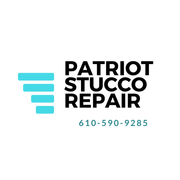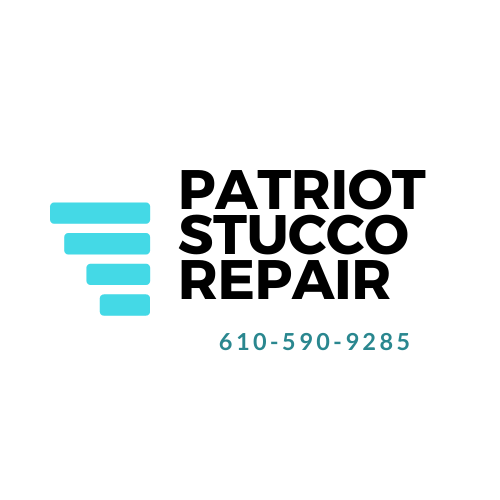Understanding Stucco Damage: Common Issues and How They Affect Your Home
Stucco: a classic choice for exteriors, but keeping it beautiful takes know-how. This blog is your guide to maintaining, repairing, and loving your stucco home!
Stucco is a popular and durable exterior finish that enhances the aesthetic appeal of homes while providing long-lasting protection. However, like any building material, stucco can be susceptible to wear and damage over time, especially due to weather conditions and age. Regular stucco maintenance and timely repairs are essential to ensure the integrity of your home’s exterior. Proper care not only prevents costly damage but also extends the life of your stucco, preserving both its beauty and protective qualities. Understanding the importance of stucco repair can help homeowners maintain a secure, energy-efficient, and visually appealing home for years to come.

Introduction to Stucco and Its Durability
Stucco has been used for centuries as a durable and visually appealing exterior finish. It is typically a mixture of sand, cement, lime, and water, applied to a framework over the exterior of a building. Stucco is widely known for its ability to endure extreme weather conditions, especially in climates with intense heat or cold. Its ability to withstand fluctuations in temperature, resist mold and mildew, and require minimal upkeep makes it a go-to choice for homeowners seeking both aesthetic appeal and functionality.
However, while stucco is designed for longevity, proper care and maintenance are key to ensuring it lasts for many years. Over time, various factors such as the local climate, the age of the material, and external impacts from weather or pests can compromise stucco’s integrity. It is crucial for homeowners to recognize common stucco issues early, as they can escalate into much more costly and severe problems if not addressed.
Common Stucco Issues
Understanding the typical issues stucco faces can help homeowners identify when repairs are needed. Below are the most common issues that impact stucco’s durability:
Cracking
Cracks are one of the most common and visible issues in stucco. These cracks can range from hairline fractures to deep, wide gaps, and they can be caused by several factors:
- Settling of the Home: As a home settles over time, minor shifts in the foundation can cause the stucco to crack.
- Temperature Fluctuations: Extreme temperature changes, especially between seasons, can cause the stucco to expand and contract, leading to hairline fractures.
- Moisture Infiltration: Water is one of stucco’s biggest enemies. When moisture enters cracks in the stucco, it can cause further damage and lead to other issues like mold growth.
Water Damage
Stucco, being a porous material, can absorb water if its outer layer is damaged. Water infiltration can weaken the material and result in various forms of damage:
- Mold and Mildew Growth: When water seeps into the wall cavities, it creates an environment conducive to the growth of mold and mildew, which can affect indoor air quality.
- Rotting Wood: Water that penetrates behind the stucco can also damage wood framing, potentially leading to rotting wood structures.
- Rusting Metal: If the wall behind the stucco has metal components, like reinforcements, water can cause rust to form, further damaging the structure.
Stucco Delamination
Stucco delamination occurs when the material separates from the underlying wall. This typically happens when moisture gets trapped between the stucco layer and the substrate (the wall behind it). Over time, the stucco may begin to pull away from the wall, forming an air pocket that can allow water to enter, leading to extensive damage.
Efflorescence
Efflorescence appears as a white, chalky residue on the surface of stucco. It’s caused by water seeping through the stucco, which carries soluble salts to the surface. While efflorescence itself isn’t harmful, it’s a clear sign of moisture penetration, which can lead to further problems if left unaddressed.
Pitting and Holes
Pitting and holes are physical damages caused by impacts from flying debris, severe weather (such as hail), or even normal wear over time. Small holes can also appear in stucco if it is struck by objects, which allows moisture to penetrate the surface and can worsen the damage.
Consequences of Ignoring Stucco Issues
Ignoring stucco problems, even minor ones, can lead to significant and costly issues down the line. Some of the most severe consequences of neglecting stucco repair include:
Water Penetration and Mold Growth
The primary danger of not repairing cracks and holes in stucco is water infiltration. Once water penetrates the stucco, it can travel deeper into the wall and cause rot or even compromise the home’s structural integrity. Mold and mildew growth is a common result of water damage, creating not only an aesthetic concern but also health hazards for residents.
Decreased Energy Efficiency
Stucco provides a layer of insulation for the home, helping to regulate interior temperatures. However, when stucco becomes damaged, the insulating properties are compromised. Gaps or cracks allow air to flow through, making it harder to maintain a comfortable indoor climate and increasing heating and cooling costs.
Aesthetic Damage
Beyond the structural concerns, the aesthetic damage to the home is another significant consequence of neglected stucco issues. Cracks, stains, and discoloration reduce curb appeal and can make the home appear worn or unkempt, which could also lower the home’s value if you’re thinking of selling.
Structural Integrity
Water damage, mold, and mildew can compromise the integrity of the underlying framework of the home. If left unresolved, this can lead to more severe issues such as rotting wood, corroding metal supports, or even collapse in extreme cases.
Conclusion
Regular inspection and prompt repair of stucco issues are vital to protecting your home. Whether it’s cracks, water damage, or physical impacts, addressing stucco problems early ensures that they don’t escalate into more severe issues. Homeowners should schedule regular inspections and take proactive measures to maintain the exterior finish of their homes. Stucco may be durable, but without the right care, even the most reliable materials can degrade over time.
Call to speak with one of our professional stucco contractors | 610-590-9285
Patriot Stucco Repair
We can help you repair and remodel your home exterior! Call us today and learn how Patriot Stucco Repair can help.
The region's leading professional stucco contractor
Proudly powered by Snapps website builder



